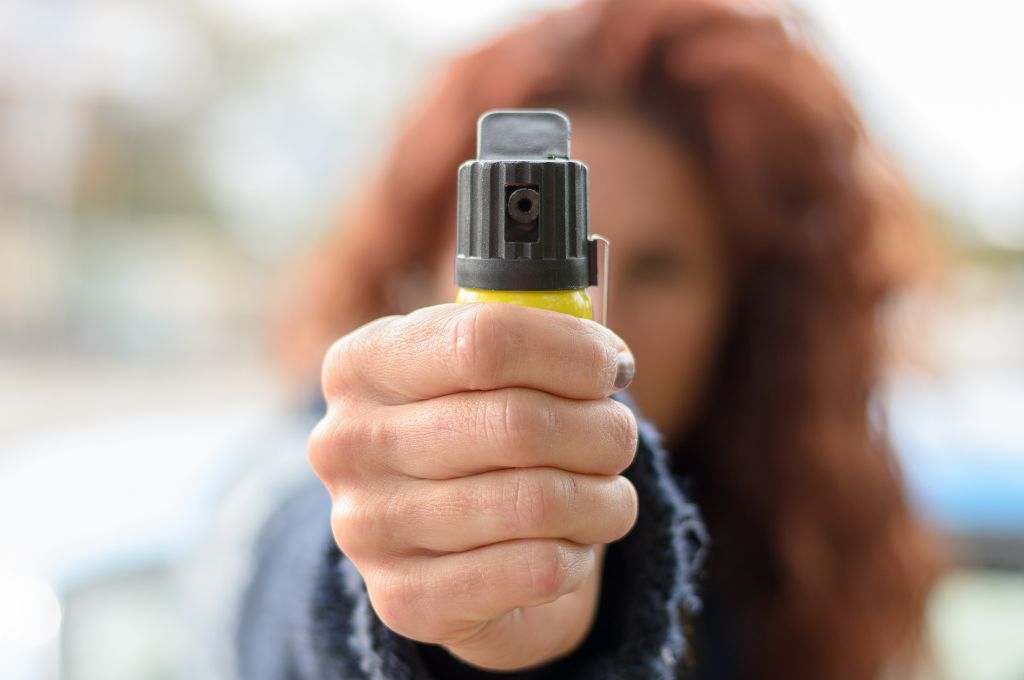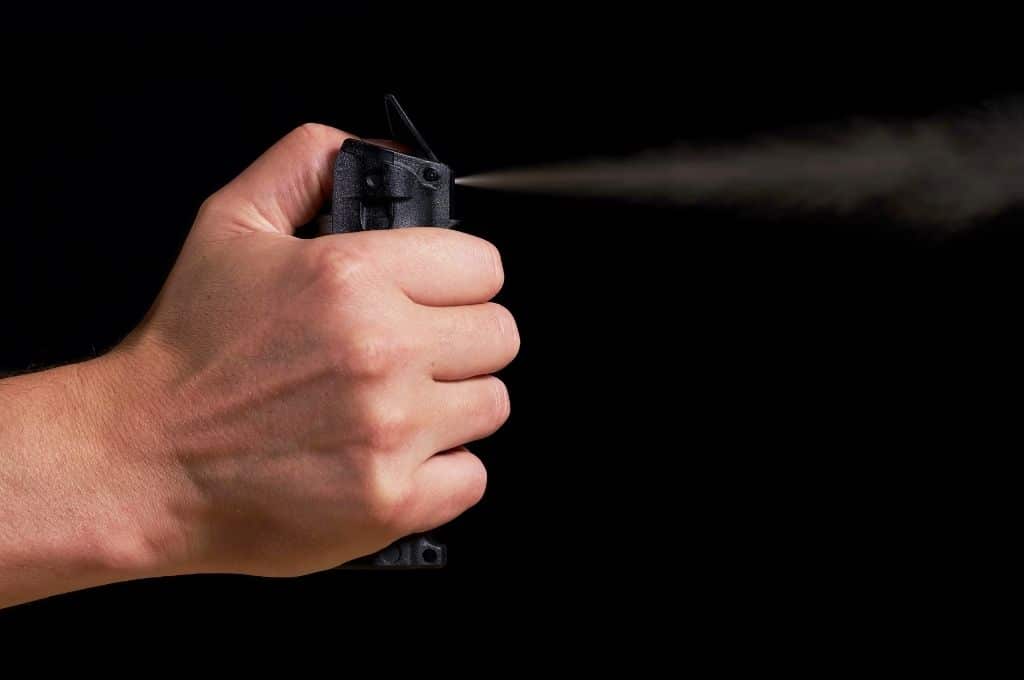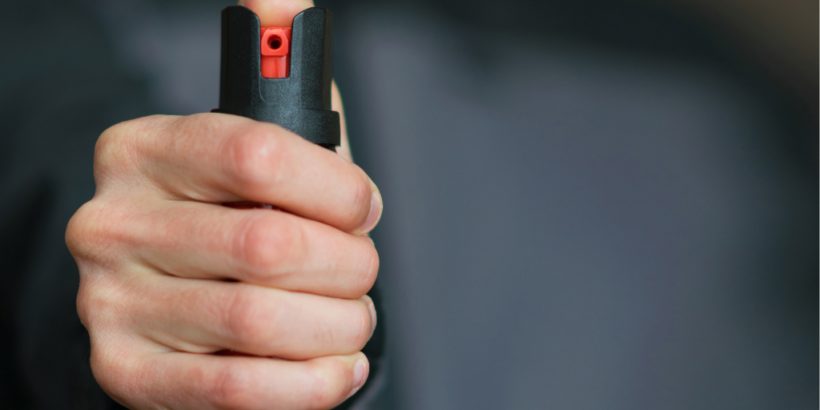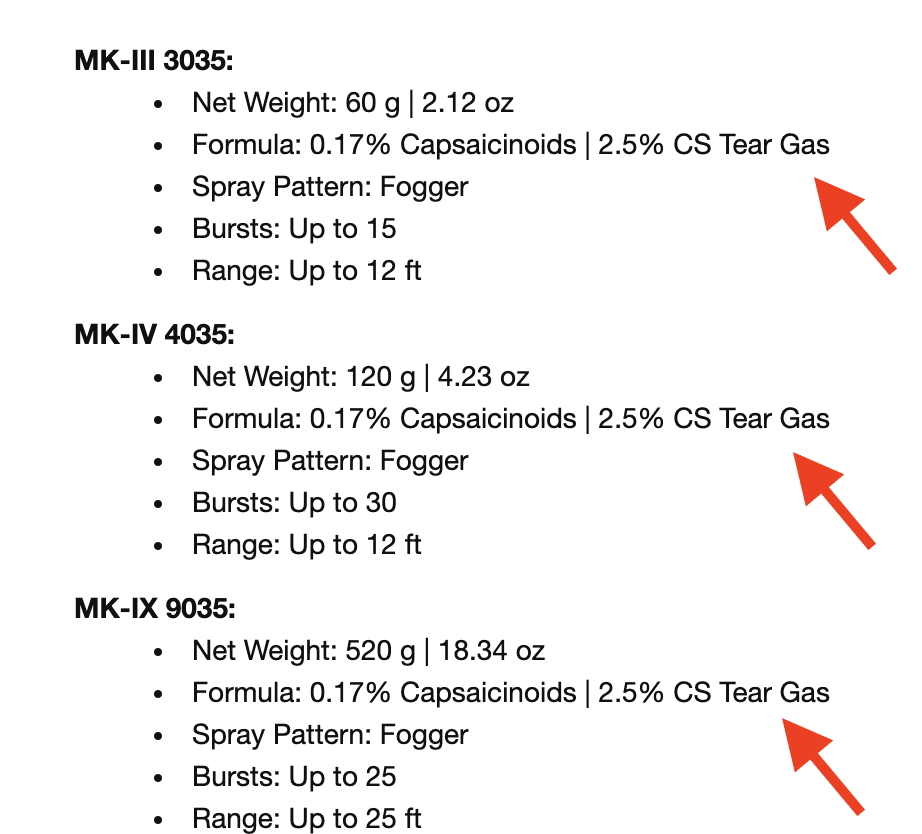Pepper spray and mace are some of the most common self-defense items travelers carry with them. But bringing these things on a plane can be problematic especially if you are unaware of the TSA/FAA rules and the policies for each airline.
Below, I will explain everything you need to know about safely (and legally) bringing pepper spray and mace through airport security and onto a plane.
Table of Contents
Can you bring pepper spray on a plane?
On some airlines, you can bring one 4 fl. oz. (118 ml) container in your checked baggage so long as it is equipped with a safety mechanism to prevent accidental discharge and is not more than 2 percent by mass of tear gas (CS or CN). You are not allowed to bring pepper spray as a carry-on item on the plane with any airline.
Tip: Use the free app WalletFlo to help you travel the world for free by finding the best travel credit cards and promotions!

TSA compliant pepper spray
The following pepper spray products will be allowed by TSA but just remember that you need to make sure the airline allows pepper spray, too!
TSA pepper spray rules
You can break down the TSA pepper spray rules into three different elements below: size, safety, and tear gas percentage.
One 4 fluid ounce container
Your container must be no larger than 4 fluid ounces or 118 ml (which is different from the liquids rule). This is the type of size that many keep in their purse and that you might find on keychains but remember to NOT put pepper spray in your purse when going through security.
Keep in mind this size requirement is focused on the size of the container and NOT the amount of liquid inside. So if you had an 8 ounce container that you believe was 40% full (under four ounces of “fluid” inside), that would not be compliant with TSA rules.
If you shop around on Amazon you can easily find pepper spray containers that are four fluid ounces or smaller.
One thing to consider about this limit is that it will likely reduce two major factors that people look at when purchasing pepper spray: bursts and range.
This means that you will not be able to shoot as many bursts at a potential offender and that you may not have as long of range. So if those two things are very important to you then you might even consider picking up some pepper spray at your destination if that is practical.
Safety mechanism
You need to make sure that the pepper spray has a safety mechanism so that there is no accidental discharge.
You could imagine how bad that situation could get for an unsuspecting TSA agent searching through your luggage. Certain brands virtually always come with safety mechanisms so if you choose the right brand this should not be much of an issue.
The FAA makes clear and the law states “a recessed button can’t be the only safety feature; there must be an addition device such as a cap that flips up.” So to ensure that your pepper spray is allowed on the plane, make sure that there is some type of cover or cap to the trigger.
Just look for keywords in the description like “safety switch” and you should be good.
You may also consider buying a case or sheath for your container. That likely will not substitute for a safety mechanism but it could add a layer of protection against accidental discharge.
2% tear gas
A big limitation to pay attention to is the limit that requires the spray to not be more than 2% by mass of teargas. If your mace or pepper spray exceeds this then you cannot even bring it in checked luggage.
TSA and the FAA explicitly state that this 2% limitation applies to CS or CN. However, they do not make any mention of Oleoresin capsicum (OC).
Any good manufacturer of mace or pepper spray should have the percentage listed on the label and it is just a matter of you inspecting it to see what the percentage is.
Here is an example of what that could look like:
As you can tell the CS percentage level is 2.5 which means that this would NOT be allowed on a plane.
Related: TSA Knives Rules: (Carry-On and Checked Baggage)

Why is pepper spray restricted on planes?
Pepper spray and mace are used both as an offensive and self-defense weapon. These could easily be used by terrorists to injure or subdue crew members or passengers. In fact, mace was used by hi-jackers in 9/11.
In some instances TSA agents have not discovered pepper spray in a carry-on and it has been accidentally deployed in the aircraft cabin, such as on United flight 1061 to Newark, NJ. In that case it caused breathing issues and a lot of coughing for passengers that was not welcomed, especially in the era of covid.
So it’s no surprise that defense sprays would not be allowed in the aircraft cabin.
There could be an issue with the flammability as well. Pepper spray by itself is not flammable. However, when used in aerosol form it can become highly flammable due to the aerosol propellants.
Related: TSA Approved Gun Case & Ammunition Guide
Mace versus pepper spray
There are different chemicals used in self-defense spray containers and because TSA restricts certain types, you should be aware of the differences.
Here are three popular types of substances you will likely encounter in pepper spray and mace containers:
- 2-Chloroacetophenone (CN)
- o-chlorobenzylidene malonitrile (CS)
- oleoresin capsicum (OC)
Pepper spray and mace are similar but not the same thing.
Pepper spray is known for being a more intense inflammatory agent and is often used to subdue people who might be more resistant to mace, such as those under the influence of drugs or alcohol.
Pepper spray will typically rely on oleoresin capsicum (OC). Mace is more likely to utilize 2-Chloroacetophenone (CN), which is the ingredient known to be the most toxic out of the three. Some containers may contain a mix of these substances for extra potency so be on the lookout for that.
TSA is clear that both pepper spray and mace are allowed so long as you comply with the above restrictions. And as you can tell by the restrictions above, you are not allowed to bring pepper spray containing the CN or CS above 2%.
Tip: Always check your expiration date because pepper spray will expire after a few years so make sure that you always check the expiration date before traveling.
Is pepper spray legal in every state?
Before you decide to head through airport security and arrive in another state you may be curious as to whether or not pepper spray is actually legal to possess in that state.
The good news is that basically every state seems to make pepper spray legal or they simply have no laws against it. States do have certain restrictions related to pepper spray use, though.
Some of these are pretty common sense such as preventing you from using it in a criminal manner. But there are some other restrictions when it comes to bringing it to school or shipping it in the mail. There may also be certain size and/or age limitations as well.
So be sure to check on the pepper spray laws for your state.
Airline policies on pepper spray
If you review the policies of major airlines like United, American, Delta, Southwest, etc., sometimes you might receive conflicting information about pepper spray. For example, they may tell you that they do not allow pepper spray in checked baggage or as a carry-on — something that directly contradicts TSA.
A lot of times if you follow up with guidance from TSA the airline will backtrack and state that pepper spray is allowed.
But it is possible that you might encounter an airline agent that is adamant that pepper spray is not allowed and sometimes they are even backed up by their terms and conditions.
For that reason, it may be a good idea to have the webpage from TSA on hand (either on your phone or printed out) so that you can show this to an agent.
Here is a look at some of the major airlines that seemingly outlaw pepper spray even in checked bags.
Delta
“Note: Gunpowder (e.g., Pyrodex, black powder, mace, pepper spray and tear gas) is never permitted.” Link
JetBlue
“Federal law prohibits hazardous materials from being included in either checked or carry-on baggage. Items such as explosives, compressed gases, oxidizers, corrosives, flammable liquids and solids, loaded firearms, radioactive materials and poisons are considered hazardous. Some common examples of prohibited items include paints, mace/tear gas, lighter fluid, oxygen bottles and fireworks.” Link
Southwest Airlines
“Southwest Airlines currently prohibits self-defense sprays on any flight regardless if it is checked or carried on.” Link
Meanwhile some other airlines are specific that the items are not allowed onboard versus just in checked baggage.
United Airlines
“Dangerous items we don’t allow on board […] Defense sprays like mace, pepper sprays and tear gas.” Link
Some airlines like American Airlines are vague and simply say that they are not permitted for travel.
American Airlines
So as you can tell, the policies regarding pepper spray and mace get really hazy when you dive into the policies for each individual airline.
Personally, if I was questionable about an airline I would try to get something in writing before my flight so that I could show it to anyone who gives me trouble from the airline.
You should also be prepared to toss out your pepper spray if you are asked to and not to cause a scene, especially while you are armed with your pepper spray.
Bear spray
Bear spray is similar to mace and pepper spray and often relies on capsaicin and related capsaicinoids for its effect. There are a few regulatory differences between the two but one of the key differences is that bear spray will shoot out an expanding cloud of spray while mace and pepper spray typically shoot out only a narrow stream that must be aimed towards the face (which is not ideal for deterring bears).
Unfortunately, you cannot bring bear spray as a carry-on or in your checked baggage.
If you are flying to hiking or outdoor recreation destinations in bear country you may be able to rent your bear spray from a national park or similar establishment so before you head out I recommend calling up visitor centers and inquiring about that.
Rules for international travel
If you are traveling internationally then you have a bunch of other considerations to think about.
First of all, you need to make sure that pepper spray is legal in the country you are traveling to. For example, it’s reported that in Australia and New Zealand, you cannot bring pepper spray.
In some instances, you may have to declare pepper spray when entering a new country. For example, we recently did a land border crossing into Canada and they told us that if we had any pepper spray we would have to declare it.
FAQ
Pepper spray cannot be brought as a carry-on and so you cannot get it through a TSA security checkpoint for passengers. However, you can bring one 4 fl. oz. (118 ml) container in your checked baggage so long as it is equipped with a safety mechanism to prevent accidental discharge, is not more than 2 percent by mass of tear gas (CS or CN), and your specific airline allows it.
You can bring keys on a plane but if your pepper spray is attached to your keychain it can not go through with you when you go through the passenger security checkpoint.
No, you cannot bring a pepper spray lighter on a plane as a carry-on item.
Yes, your pepper spray could expire anywhere from 2 to 5 years.
Final word
Bringing pepper spray on a plane is doable but there are just a few things to keep in mind. First, you can never under any circumstances bring pepper spray in the cabin.
Second, you must limit the size of your container to 4 ounces, be sure to have an adequate safety mechanism on the spray, and make sure you are abiding by the 2% limitation.
Third, you must be prepared for individual airlines to not have policies directly in line with TSA.
Daniel Gillaspia is the Founder of UponArriving.com and the credit card app, WalletFlo. He is a former attorney turned travel expert covering destinations along with TSA, airline, and hotel policies. Since 2014, his content has been featured in publications such as National Geographic, Smithsonian Magazine, and CNBC. Read my bio.




I was wondering if there are any restrictions preventing non residents I mean to say Legally visiting tourist or non emigrant visitors